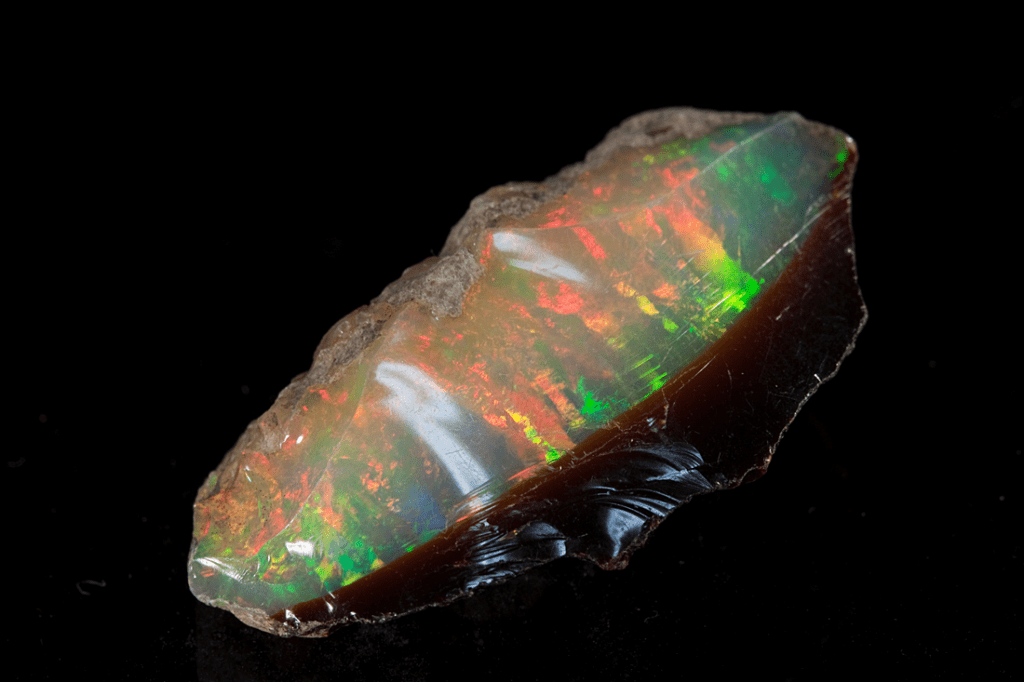Contrary to what you might think, this is not some rainbow slime dripping on the rocks – this is the wicked opal. Opal has quite some unique properties in the geological world; it doesn’t have a crystalline structure so you can’t really say that it’s a mineral, but a mineraloid, yet somehow you see it mentioned with minerals all the time.
Its structure comprises of silica spheres, each spherule on the order of 150 – 300 nanometers in diameter (one nanometer is a billionth of a meter) – you do the math and you see that you need lots and lots of these little guys to reach noticeable sizes. So the spheres settle up one next to the other, and the remaining space between them is filled with water. Much like quartz, pure opal is colorless – but impurities give it the dazzling colours we sometimes see.
Another fascinating thing is the condition called “crazing” – which affects certain Opals, causing them to form internal and external cracks. Crazing lacks consistency, it is unpredictable and may also take place when an opal is subject to vibration, as during the cutting and polishing of a specimen. It is still not known exactly what causes this phenomena




